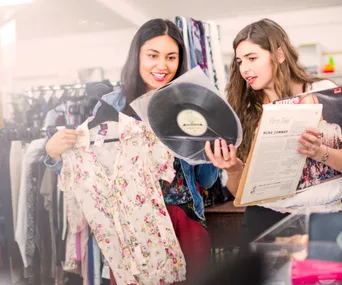My journey to embracing slow fashion has, appropriately, been slow. I did not – could not – give up on fast fashion overnight. It was a journey of progressive little steps and then a leap. When I look back at myself 10 years younger, I appreciate how significant that revolution has been, from becoming a weekend high street hauler to having a purchase pattern based entirely on a minimalist, sustainable checklist so well-entrenched I’m no longer conscious of it.
Slow as that 10-year process was, I deliberately hit the accelerator in 2016, signing up to a challenge to wear only six items of clothing for six weeks. Such a fashion fast sounds ridiculous and unnecessary, cruel even, but I needed a monumental leap to embrace a more minimal, more mindful, kinder way of styling myself.
I would never have considered participating in the Six Items Challenge without having already been on a journey to consciously clothe myself. So, let me start my story with the beginning – a pair of ‘sweatshop-free’ Chuck Taylor-style sneakers I bought 12 years ago in Auckland.
At the time, I was an editor flatting in the central city with a decent disposable income, shopping every other weekend to keep my wardrobe in line with my 20-something, sans-kids media lifestyle. I loved shopping and was trend-conscious, albeit without any distinct personal style. If it was on trend, I wanted it.

The seed of consciousness: Asking where our clothes come from
Buying those trainers was a moment that planted a consciousness seed into my addiction. If some shoes were proudly sweatshop-free, where were others made? Who made them? And what about my clothes, I wondered? The low cost and high frequency of new trends was – and is now even more – astounding, relentless, unsustainable. It started to feel wrong.
Not long after that seed took root in my previously blissful ignorance, my journalist’s curiosity led me to articles about garment factory workers – usually young women – slaving away in dark, unsafe factories for more hours than is right, yet remaining in dire poverty. I saw pictures of toxic waste and rivers turning blue from denim dye.
It was a disheartening discovery, but I didn’t know what to do. ‘Sustainable’ and ‘fair’ fashion was, circa 2010, neither pretty nor stylish, save for a few high-end designers like Stella McCartney that were beyond my budget. Slow fashion wasn’t even a term. Second-hand clothing is always a great solution, but it wasn’t enough for me.
It became my mission to discover brands producing sustainable ethical clothing.
This evolution wasn’t in a vacuum. Consuming consciously was not an uncommon habit for me, because like many Kiwis, I prefer to consume seasonal, made-in-New Zealand produce instead of air mile-heavy imported goods.
At the same time, I had a friend who invested in beautifully crafted, New Zealand-designed or -made items. She knew her style, and I admired her ability to commit to that style, buying quality over quantity. It was eye opening.

The Six Items Challenge
I wanted sweatshop-free, sustainable clothes, preferably made in New Zealand, and I wanted to somehow buy less but look better! No small feat.
So, when I heard about the Six Items Challenge, run by UK-based non-profit Labour Behind the Label, it felt like providence.
The challenge is the annual flagship campaign to raise funds and awareness in support of garment-making worker rights and better industry standards, for example a living wage for workers. Challenge participants wear only six main items of clothing for six weeks around the time of Lent – a fashion fast against fast fashion, timed with the typical six-week cycle for new trends. During this time, participants don’t buy clothes either.
Despite feeling the timing was right, when it came to March I had sleepless nights thinking about a wardrobe with only six items dangling in it. I had to resist the urge to go shopping.
The final six to make the cut included: 1) A pair of black smart-casual silky harem pants; 2) A violet linen skirt with a boho feel; 3) A black dress from Kilt Clothing that could be cinched in at the waist to create a tulip style skirt; 4) and 5) From Kowtow, a Breton-stripe three-quarter top and black V-neck tee, both organic cotton, and 6) A white short-sleeved cuffed and hemmed light cotton blouse with very light accents of lavender, that sat well over the pants and over and under the dress/skirt. As per the challenge rules, I was also allowed one jacket for colder weather. Living in Queenstown, this was a must. I opted for a floral tapestry bomber jacket that, fully lined in black, was reversible.
The challenge, by the way, allows unlimited active wear (for activities not just everyday wear), shoes, underwear, sleepwear, uniforms and accessories.
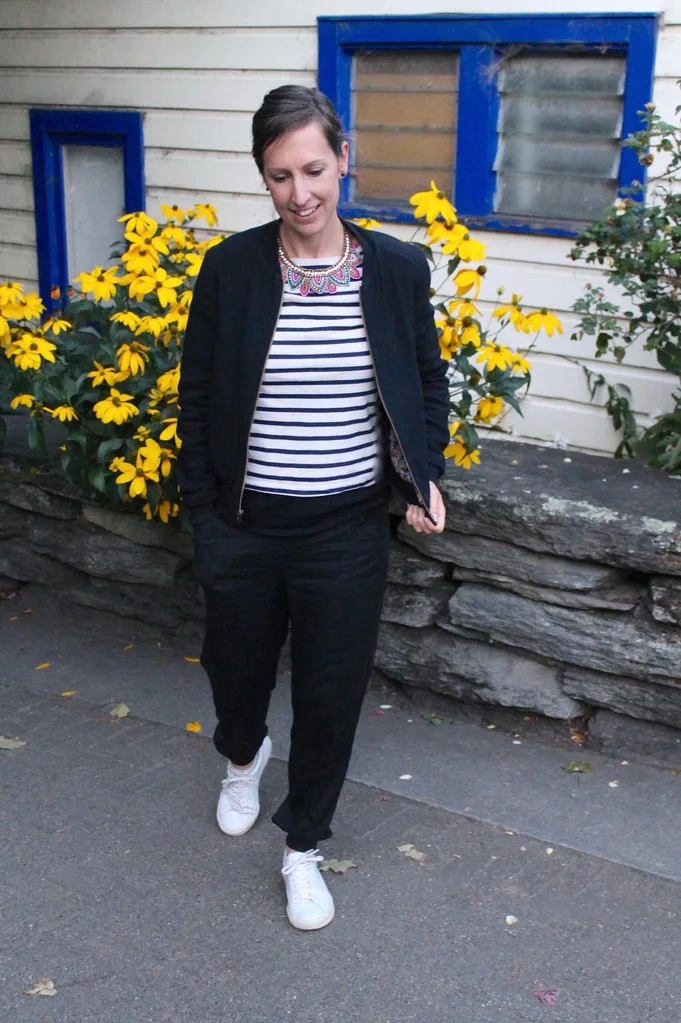
What I learned from the six week challenge: Revelations
The selection process alone was a revelation. I was discovering my style personality – that substance (material, functionality and comfort) was equally important to style. Clearly, I gravitated toward well-tailored, restrained, single colour items that weren’t tight, too short or too revealing.
The following weeks were both liberating and testing. Yes, having so little to choose from in the morning brought simplicity into my life, but I yearned for variety especially for celebratory occasions like a birthday lunch at Amisfield Winery.
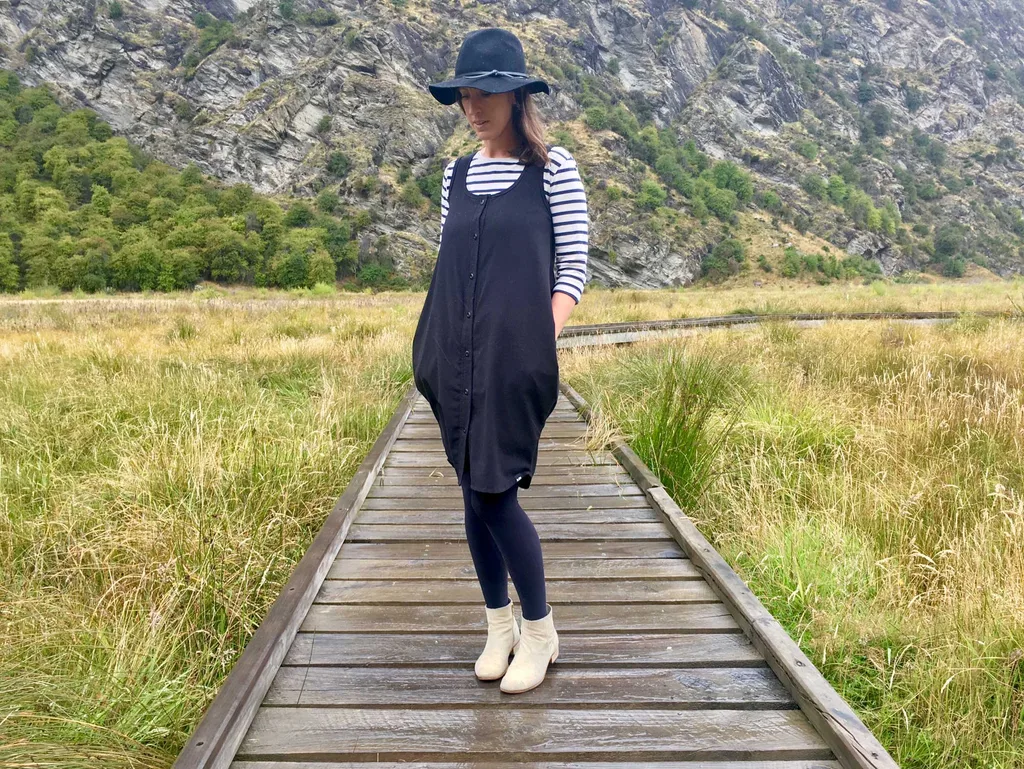
What I learned from the six week challenge: Surprises
My clothes took a knock, and twice I sat down to darn, a new experience for me, but one that taught me how easy it is to treat my clothes with greater care. I no longer have that ‘throw away and replace attitude’.
There were other lessons. Organic cotton, I found, was an absolute hero – long-lasting and holding its softness under the extreme conditions of unusually high wear. And Breton stripes will never go out of fashion.
Another revelation that astonished not only myself, but my work colleagues, was that no one at work really noticed – makeup, hair and accessories really can change the entire look of an outfit!
Toward the conclusion of the month-and-a-half fashion abstention, I considered what I would wear on day one, post challenge. Surprisingly, I couldn’t even remember the contents of my usual wardrobe.
Truthfully, I was a little anxious about letting all that stuff back in my life. It dawned on me that the clutter of clothes and the addiction to trends had been holding me back, back from discovering my own style, and back from having the space and the breathing room to curate my perfect wardrobe.
That is what I now have – the perfect wardrobe. I have a 30-item seasonal capsule, not counting accessories. There are a number of capsule wardrobe systems, all voluntary, but generally they involve a limited number of clothing, usually for a set period of time, often designed around matching outfits. Not quite six, but much less than the typical closet stuffed full of clothes, 50% of which will never be worn again, according to research.
Every three months, I now curate my ‘new’ capsule, hanging back only those 30 items I want and need, often leaving a couple of hangers short for potential new purchases. At each seasonal turn, I rediscover my clothes that have been stored out of sight and mind for three, six, sometimes nine months. Many items – such as a great pair of jeans – are a staple across all four seasons. In some instances, I have exceeded the limit. I don’t beat myself up about it.
The process from only six to 30 has made me mindful about my consumption of clothes and how to make them last – choosing quality over quantity, and in my case sustainable, ethical brands (and I still love second-hand). What I know now is that it’s futile trying to keep up with six-week trend cycles while trying to lessen your carbon footprint. Minimalism and sustainability go hand in hand.
Having identified my style personality through the Six Items Challenge means I’m no longer a slave to trends – although I am still trend-conscious. I feel confident and importantly, I feel myself when I walk out the door every day.
Not only does a capsule save time in the morning, but unintentionally, I am now spending not as much per year because I buy less, clothes last longer, holding shape and colour, and I covet what I have. Each new piece is an investment, like a work of art. To support that longevity, I mend, resole or re-dye shoes and clothes. My clothes are mostly made
of natural materials such as cotton, wool, lyocell or silk, which is kinder to my skin, and biodegradable.
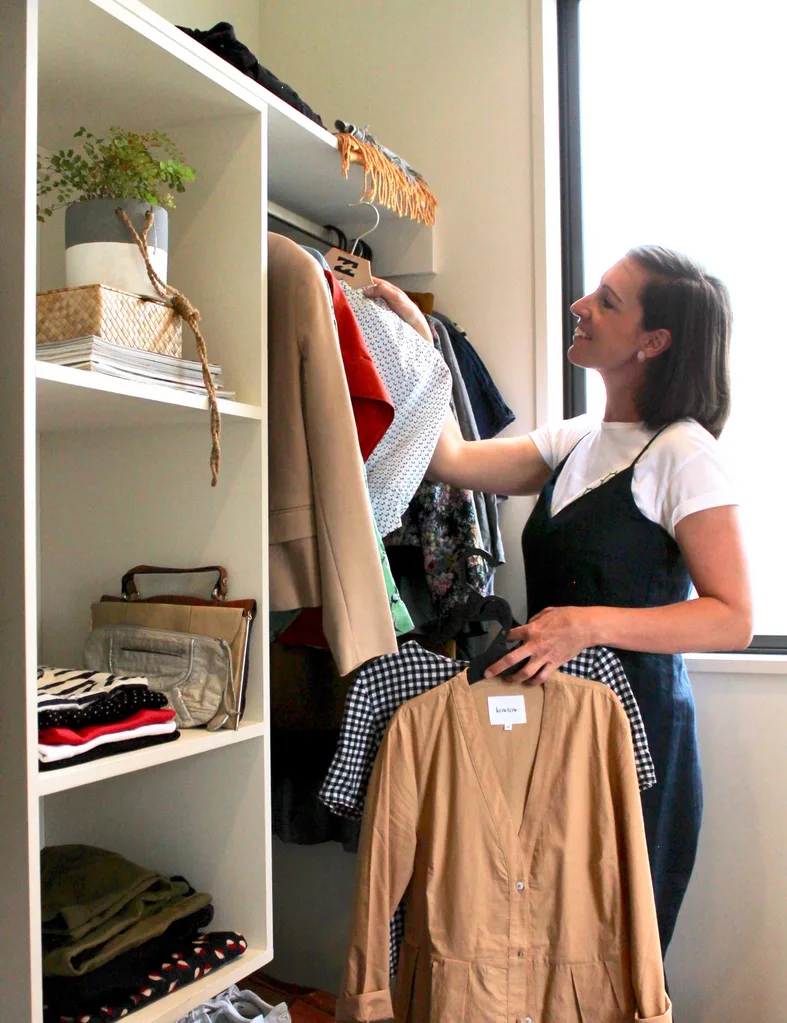
What I learned from the six week challenge: Challenges
This is slow fashion at its core. It is being conscious of consumption from purchase to parting, seeking better quality stuff (and less of it), and being kinder to the environment and the people involved in making our clothes.
The Six Items Challenge was more than a personal accomplishment to show I could do it.
It challenged my way of thinking about fashion consumption, slowed it down and pared it back.
While six items for six weeks is extreme, I am forever changed by these revelations, the liberation and the life-long switch to my own mindful, deliberate, sustainable style. If a little seed has been planted for you, nurture it by taking little steps and perhaps when you’re ready, a leap!
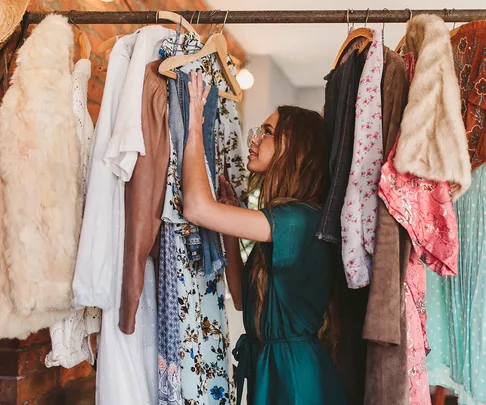
.jpg?resize=380%2C285)
